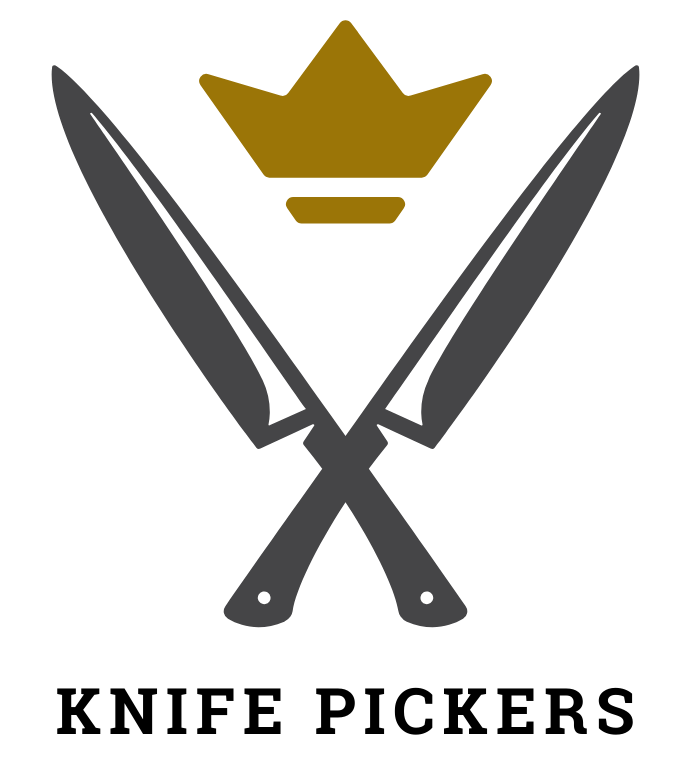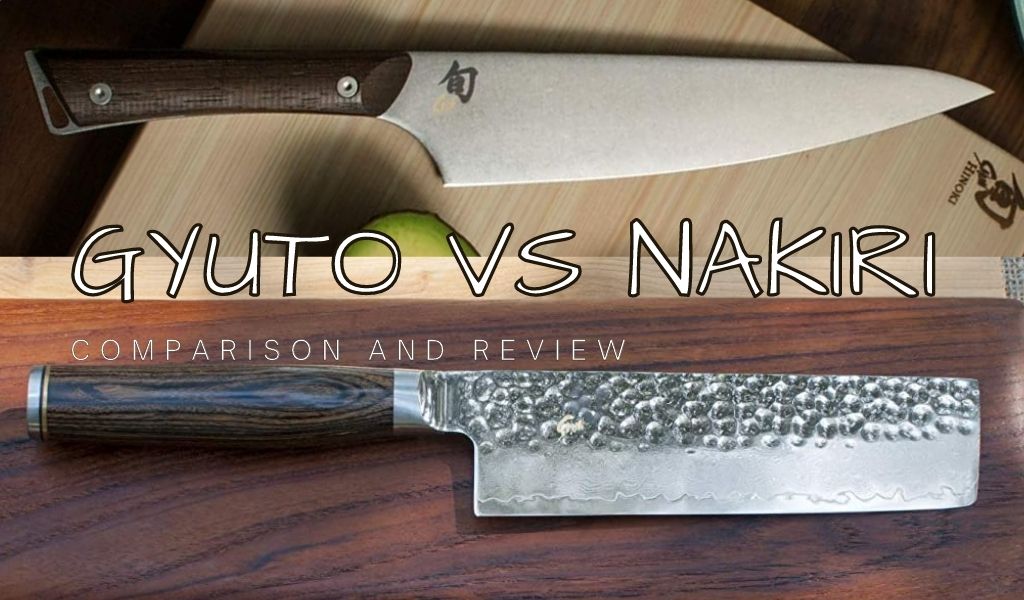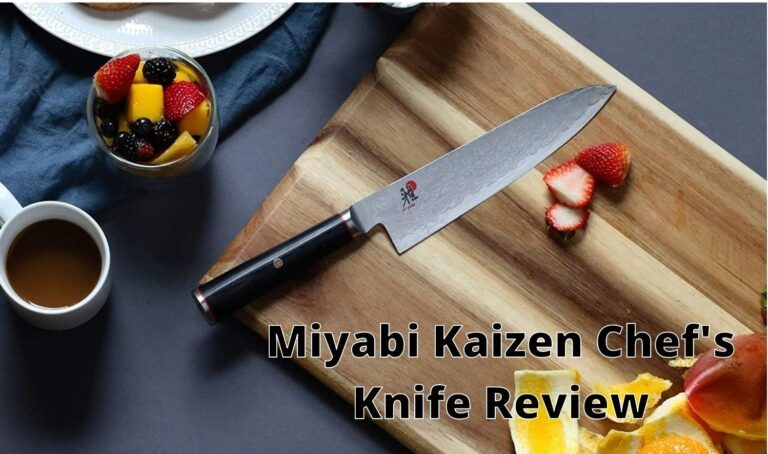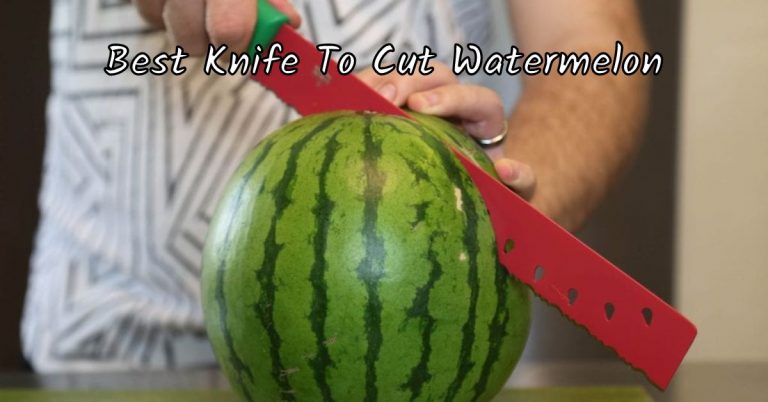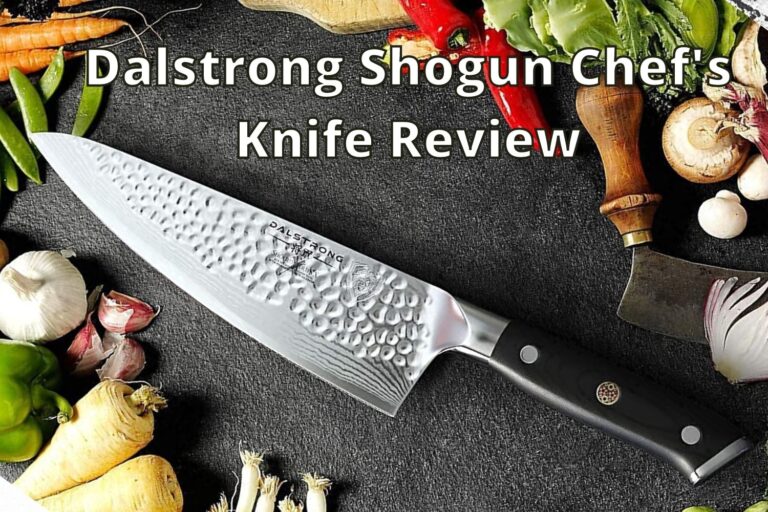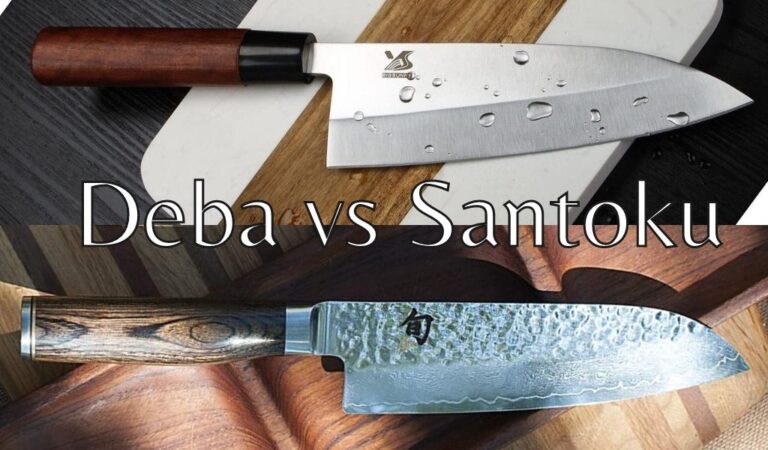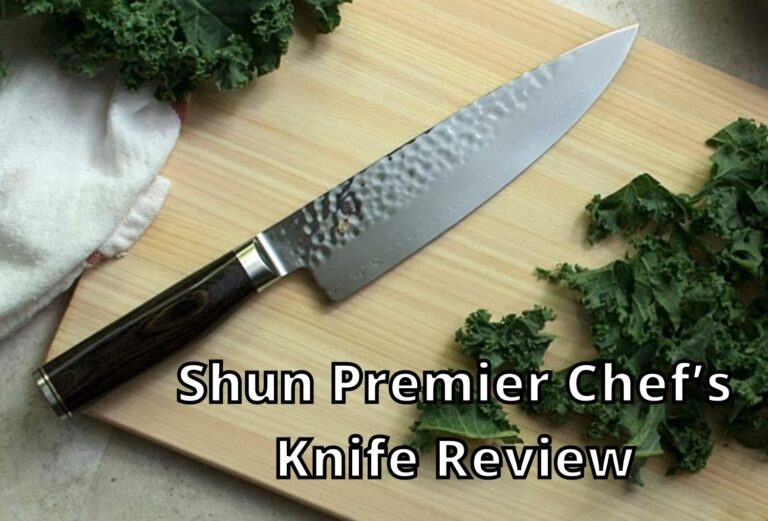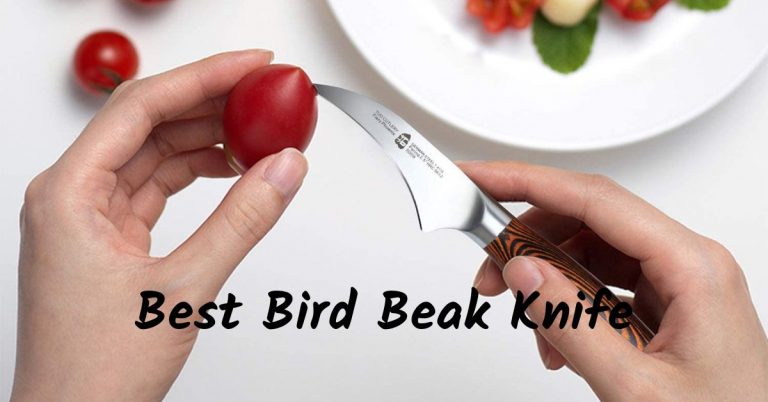Japanese knives are inarguably some of the best in the world, and there are many reasons for this. The most important factor to consider when choosing a Japanese knife is knowing how it will be used. In particular, one must decide between a gyuto knife and nakiri. Both have flat blades, but they’re designed for different tasks. A nakiri is designed specifically with vegetables in mind, while a gyuto can do different jobs equally well.
Let’s go through this whole Gyuto vs Nakiri knife comparison to know more about their features and their cutting qualities.
What is a nakiri knife?
Nakiri knives are Japanese vegetable knives with a flat edge that is a hybrid between a chef’s knife and a cleaver. The shape of the blade allows for easy chopping and dicing, making it ideal for use in preparing vegetables.
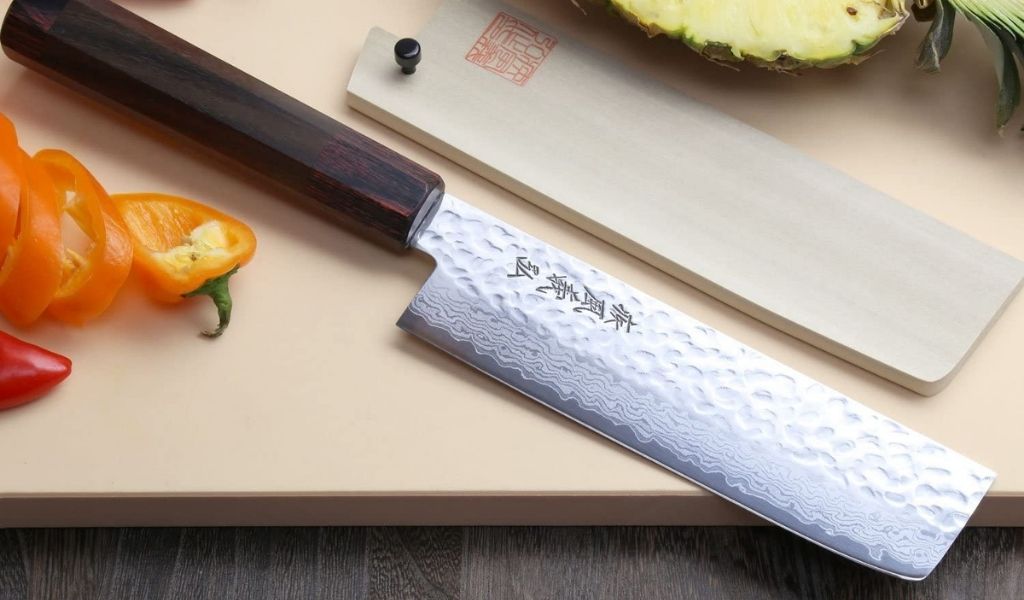
The Nakiri is also great when cutting smaller items such as garlic cloves or shallots where using a Chef’s knife would be difficult to maneuver. Moreover, sometimes this knife is also used for slicing meat and fish.
The traditional nakiri has a single bevel on one side of the blade. That runs from edge to spine in order to create an extremely sharp cutting surface that will easily slice without crushing food.
Realated Post: Shun Premier Nakiri Knife
What is a gyuto Knife?
Gyuto is a Japanese word meaning “cow sword”. It is used to describe a large chef’s knife, although the term has become genericized. And it is also used to describe other Asian chefs’ knives.
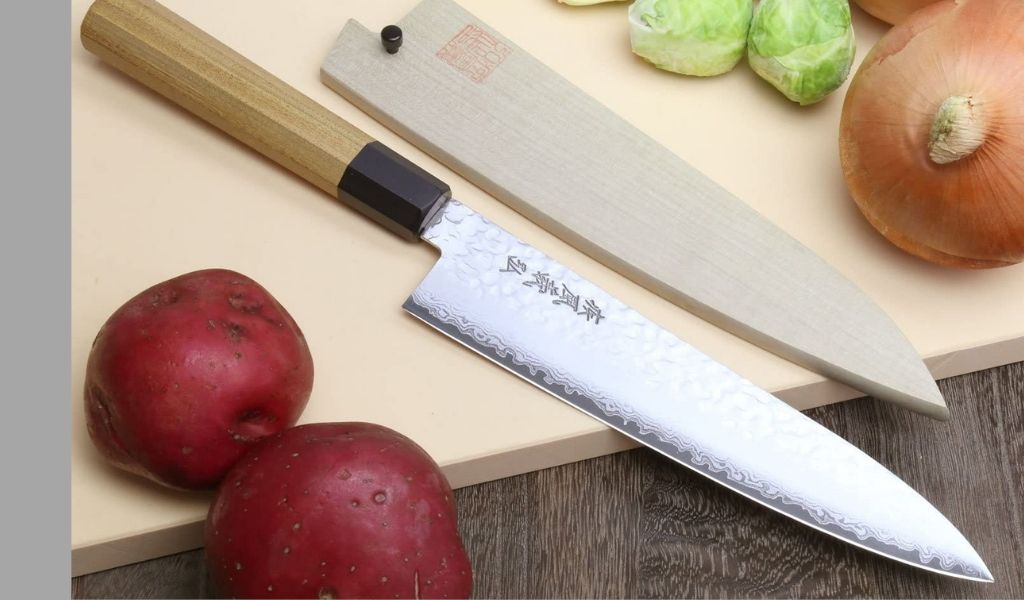
A gyuto knife is used for both cutting and slicing. You will find a gyuto knife usually between 6-8 inches long and a straight edge with a blade that is two inches wide.
Because of its length and width, a gyuto knife can be used to cut through large pieces of food without reposition the food or you won’t need to stop cutting.
Usually, good gyuto knives are made using high-quality steel which allows them to keep their sharp edge for longer. As well as it helps to be very flexible so it doesn’t break.
Comparison Table: Gyuto Knife vs Nakiri Knife
| Nakiri Knife | Gyuto Knife | |
| Origin | Japan | Japan |
| Catagory | Modern Knife | Allrounder Modern Knife |
| Function | Chopper and Slicer | Slicer, Chopper, Mincer |
| Blade | Belly curve with a tip point | Wide and rectangular |
| Handle | Round, Octagonal, Straight | Round, Octagonal, Straight |
| Food types to cut | Meat, Fish, Fresh Produce | Mainly vegetable and fruit |
Origin of Nakiri and Gyuto Knife
The history of nakiri vegetable knife is a long and interesting one. The knives were used by the samurai class in Japan as hunting knives, so they were originally made to cut through bone and sinew.
The nakiri knife has a very sharp blade, and it cuts with a slicing motion rather than a chopping one. With time, People started to use these knives especially for cutting vegetables and fruits. The name of this knife “nakiri” means “to cut or slice”, that is what the blade does best.
The history of the gyuto knife is quite interesting. The first versions appeared in the mid-1500s and were created in Japan. The blade of these knives was much thicker than the modern ones And they were used for chopping wood and bone. The handles were made of wood, without the use of metal fittings.
The origin of the word ‘gyuto’ is from Kyoto, Japan. It means “cow sword,” .But it’s not a sword made from cow leather. It was nicknamed “cow sword” because it was stored in the same place as swords used for cutting cows and fish.
Nakiri vs Gyuto Knife: Blade Design and Construction
Nakiri Knife
Most of the nakiri knives are single-beveled with a hollow ground edge.It is a one of the unique features of this type of japanse knife. The blade is designed to be thick and heavy, and it has a straight edge that’s been hollowed out. It may be slightly curved or completely flat, depending on the purpose of the knife.
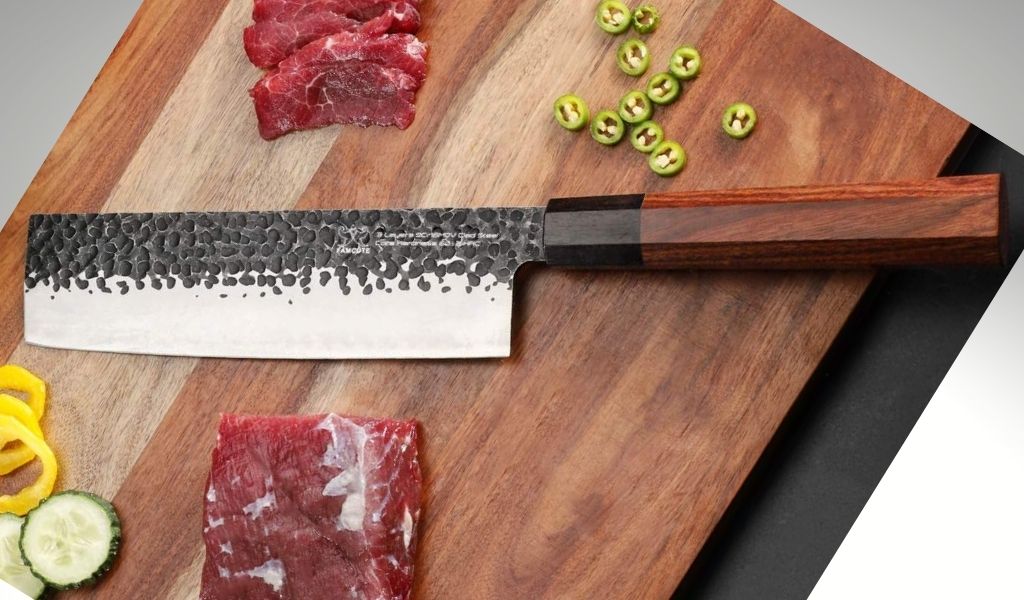
A nakiri knife is designed to perform tasks like chopping vegetables, fruit, and boneless meats. But it can also be used to cut herbs, fish, and even meat bones. The best nakiri knives are made from high-quality steel and hardened using a traditional process.
Do you know why the blade shape of the nakiri is designed so uniquely?
The shape of the nakiri blade is derived from nature. The nakiri blade has a scallop design that is meant to look like waves on water. The wave-like shape helps cut vegetables into thin and even slices, which makes it an excellent tool for cutting vegetables as mentioned before in this nakiri vs gyuto knife comparison.
Gyuto Knife
Gyuto knife usually comes with a blade length of 180 mm to 210 mm. It is typically used for making long, sweeping cuts, and is unsuitable for chopping or dicing.
A Gyuto is, as the name implies, a hybrid between a western-style chef’s knife and a traditional Japanese knife.
The blade of a Gyuto is unlike any other kitchen knife. It has a totally different purpose, design, and use than any western style chef’s knife.
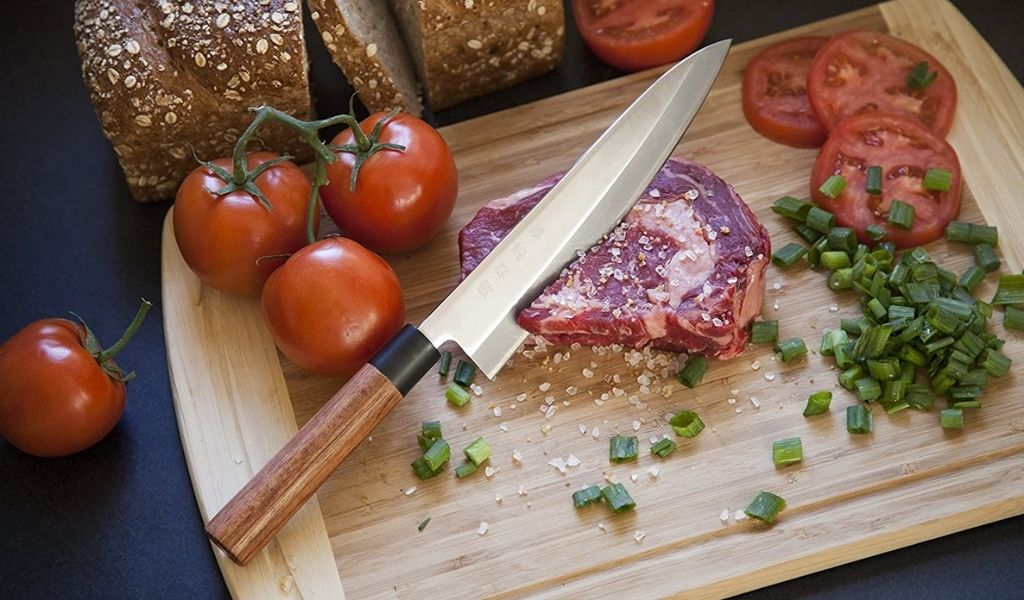
The basic design of the blade is quite similar to that of a cleaver, as it is designed also for cutting through thick meats and bones. While western chef’s knives are designed for slicing and dicing vegetables, the Gyuto knife is capable to chop meat. Because of its heavyweight relative to its length, the gyuto knife is perfect for chopping side dishes such as onions, garlic, and celery. As described in this nakiri knife vs gyuto knife review, the blades can cut through these root vegetables with ease.
Gyuto vs Nakiri: In-depth Comparison
Usage Capacity
The Nakiri is a Japanese vegetable knife that has a flat and thin blade with less metal to push through ingredients and slice them smoothly. Nakiri knife is also very lightweight and nimble that makes it ideal for prepping vegetables. Use the Nakiri to cut cabbages, julienne onions, or sliced apples.
The Gyuto is a multi-purpose knife that performs well in many tasks. The knife will cut herbs like cilantro, vegetables or boneless meats and fish. You can use a larger 240mm Gyuto to cut many ingredients at once. But the precision won’t be as good as the Nakiri if you look for a specific nakiri vs santoku vs gyuto comparison.
Construction
Construction of a blade varies greatly between different brand and different model. However, a traditional Japanese knife will be forged from a single piece of high-quality steel. The nakiri is made this way, as well as gyuto. There are a lot of variations, though.
The Damascus technique allows for a very durable and strong blade.It also has a unique and beautiful pattern on it. Other models of these knives all feature a hammered tsuchime finish. This is another traditional Japanese technique.And it involves hammering the blade, allowing for dimples to form.
In short, if you’re looking for a perfect knife to use while cooking Asian-style dishes, then a Japanese-style knife is the best option. And if you want to buy one of these knives, just be sure that it’s made by a renowned brand like shun,miyabi, global,kamikoto etc.
Blade Shape
Nakiri knives have a flat profile with a rectangular shape and a long and thin blade. This type of knife is available in multiple sizes, usually between 120mm and 240mm. The most popular sizes are 165mm and 180mm, that is large enough for most of the users.
Its flat profile, allows you to chop through vegetables and use the entire length of the cutting edge for clean cuts.
The Gyuto knife is a Japanese kitchen knife with a rounded tip. It also has a flat profile across the edge and a tall heel. The rounded shape makes it excellent for push-cutting and making clean cuts through ingredients.Whether you’re cutting onions or boneless meat you will get a smooth feel. However, this type of shape isn’t suitable for rock chopping because of the cutting edge.
Blade Tip
The Nakiri knife has a flat edge that is typically used to slice through vegetables and meat.Nakiri knives don’t have any pointed tips. The lack of a pointed tip means you can’t pierce or puncture the food before slicing it. However, you can use a Nakiri like the Fujimoto Nashiji Nakiri to split ingredients in half by placing the upper end of the edge and dragging it.
Gyuto knives have a pointed blade tip, which is ideal for making precision cuts. A pointed tip can pierce and puncture with ease.And it gives you more leverage on thicker ingredients like pumpkins.
The Gyuto also lets you concentrate more pressure on the tip for penetrating hard food such as meat chunks.
Knife Steel
Knife steel will vary greatly depending on the make, model, and brand of blade. However, most Japanese kitchen cutlery on the market today will be made of high-carbon steel. This makes the blade very hard, so edge stay sharp for a long time. However, these are prone to rust and oxidizing if not properly maintained. So, it needs proper care and the whole process is described below in this gyuto vs nakiri.
Handle
Gyuto knife features a combination of Japanese and western knives in its design. So, it’s pretty common to see Western-style handles on them. These are designed to fit very comfortably and ergonomically in the hand and be very sturdy.
A Japanese handle is shaped differently from a Western one. It will usually be octagonal, and it will be made out of wood. Western handles are typically made of synthetic materials.And they can feel very heavy in comparison to a Japanese handle.
And in the nakiri knife, you will usually find Japanese-style handles. But nowadays nakiri knives also come with western style handles.
Blade Length
Standard Nakiri knives have a blade length of 5 to 7 inch, which is good enough to cut most vegetables in a single pass. The smaller blade size makes the Nakiri an excellent choice for cooks with limited space. You can use the full cutting edge even in a small place like the home kitchen or at a restaurant.
Gyuto knives measure between 7 inches to 14 inches, making the Gyutos longer than Nakiri knives. Longer Gyutos will let you cut more food volume quickly, slicing through more vegetable at a time. It’s the perfect choice for professional chefs who need to prepare and serve their dishes quickly.
Sharpening Cutting Angle
Do you want to know how to sharpen nakiri of the gyuto knife?
Sharpen a Nakiri knife at an 18 to 20-degree angle to the whetstone. Experiment with the blade to find an angle that feels better for you.
And in case of sharpening the gyuto position the blade at a 45-degree angle to the whetstone. Use your non-dominant hand to press down on the back of the knife, and move back and forth 20 times to get a burr. Sharpening a Gyuto knife is easier. Because the process is similar to how you would sharpen most other knives.
Cutting Action
The Nakiri knife is a versatile kitchen knife with a straight edge. It’s good for chopping vegetables in an up-and-down motion across the cutting board. That allows the blade’s cutting edge to hit the cutting board at the same time and chop veggies evenly. A pinch grip will give you better control by distributing pressure over the length of the blade.
Whereas, Gyuto knives have a rounded blade. They can chop, push slice, pull slice, and make horizontal cuts. This can also be used for making rocking chops and mince herbs but the blade should not be chipped.So, it needs extra care while having rocking chops as described before in this Gyuto vs nakiri review.
Ease of Use
Using the Nakiri knife takes skill. The cutting armrests at a 45-degree angle to your body. It keeps the blade in almost a horizontal position on the cutting board, which makes it easier to slice comfortably. If you use your Nakiri with your arm in front of you, your wrist or elbow may run into your lower torso.
On the other hand, Gyuto knives are easier to use and you don’t have to adopt a particular posture. You can use the Gyuto for slicing, moving the blade up and down in the same spot. There’s also the option to use a rocking chop motion in that case you won’t need to move your arm in a push slice motion.
The main use of Gyuto and Nakiri knife
Nakiri knives is a simple but effective tool that can handle many different tasks in the kitchen. Nakiri knives are primarily used for chopping vegetables and slicing fruit, but they can also be used to slice boneless meats, fish, and poultry.
The gyuto is a versatile Japanese chef’s knife that can be used for almost any type of cutting job in the kitchen. It is designed to handle all types of food preparation tasks including chopping, mincing, and dicing as mentioned a lot of times in this nakiri vs santoku vs gyuto review.
The Gyuto is a variation of the classic chef’s knife. Usually gyuto has a wider blade than the santoku knife and also has a pointed tip. The width of the blade allows it to be used for cutting meat and fish, while still being very maneuverable. The lack of a point on the blade makes this knife perfect for chopping through thick vegetables and herbs.
Nakiri vs Gyuto knives: How to use?
The way you hold knife matters, even if the end result is the same. It’s not just about the shape of the blade and how it moves through whatever you’re cutting, it’s also about how you hold the blade.
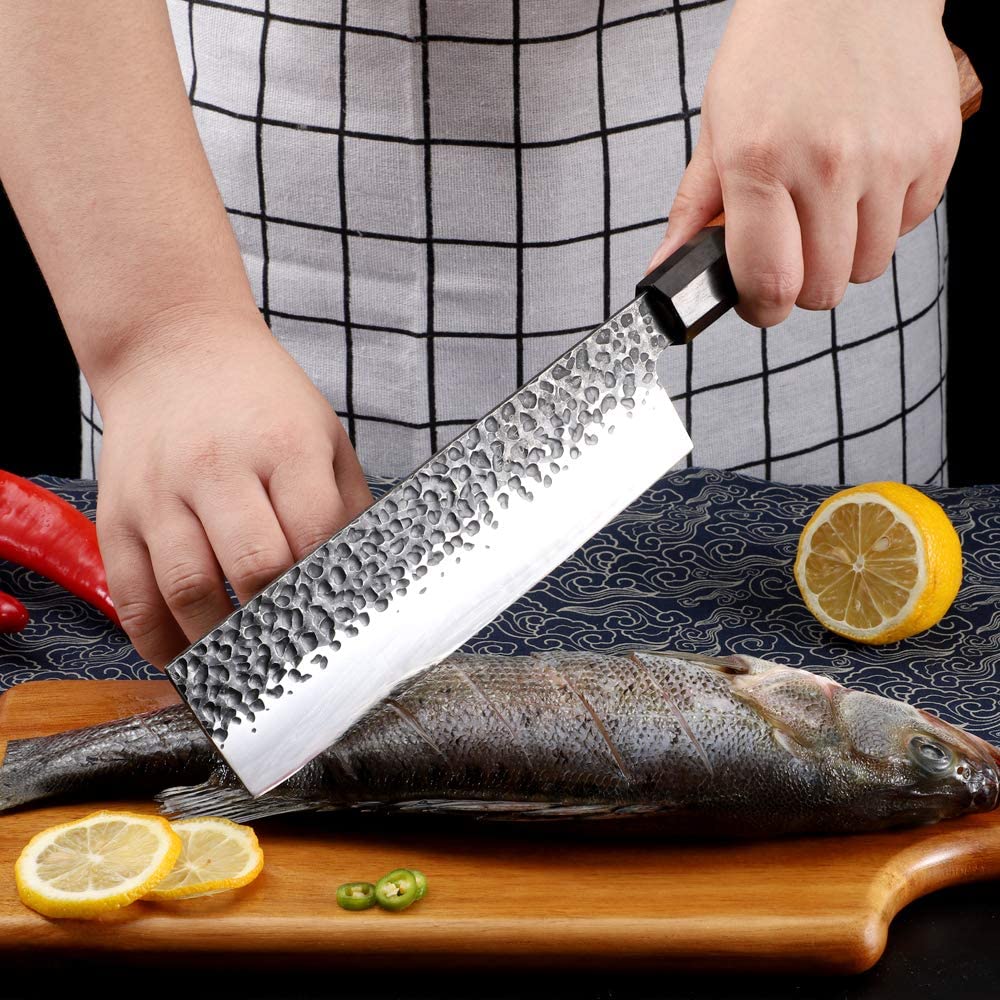
Proper technique of using nakiri, help you cut your vegetables and fruit with ease. The first thing you need to know is that nakiri knives have a unique blade shape. The tip of the blade is not pointed but has a sharp edge.
The back of the blade is straight and has a smooth edge so you can have a comfortable pinch grip while using a nakiri knife.
Here are a few ways to hold your Japanese gyuto knife. You can use a pinch grip, a pen grip with your fingers wrapping around the handle. You can also use a standard grip where you place your thumb on top of the blade. I recommend trying all these grips to see what works for you.
Gyuto or Nakiri, Which one is better for you?
Why You Should Use a Gyuto or a Nakiri?
It totally depends on you that what is your main purpose of buying the knife? What do you want to do mainly in the kitchen?
From this whole nakiri vs gyuto comparison, you may know the core differences that the Nakiri is used for chopping and slicing vegetables, while the Gyuto is used for cutting meat.
The Nakiri has a straight blade edge, which makes it suitable for cutting thin slices of vegetables such as carrots, radishes, and cucumbers. On the other hand, the Gyuto has an angled blade edge, which enables it to slice through meat with ease. Though gyuto is an all-rounder knife that can also be used for cutting vegetables and other types of food.
So, If you want to buy a knife for precise vegetable cutting then go with a nakiri.On the other hand, if you want an all-purpose knife that is mainly used for meat go with the gyuto.
Conclusion
Both knives have their place in the kitchen, but it’s important for you to know what makes each one unique. We hope that this gyuto vs nakiri article has been helpful and you may have got a clear idea about these two types of Japanese knives.
Related Comparison:
